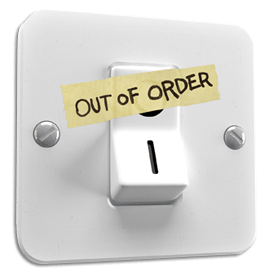 Choosing energy-efficient lighting and controls is a major decision that can help your facility limit its environmental impact, save on operational costs and cut time spent on maintenance.
Choosing energy-efficient lighting and controls is a major decision that can help your facility limit its environmental impact, save on operational costs and cut time spent on maintenance.
And as building codes evolve to include energy efficiency standards, new industrial facilities—or ones looking into remodeling—may have to use the latest lighting technology to meet the new requirements.
The Role of Energy Efficiency in Building Codes
Energy regulations for all facilities, including industrial, are becoming stricter.
Building code creators are encouraging businesses to equip themselves with lighting options that will either reduce their current energy consumption, or when building new, choose products with the best lumens per watt (similar to miles per gallon) while still supplying the required foot candle measurements.
For example, you could reduce your energy consumption by choosing a lower watt T8 lamp and installing program start ballasts. You could get an estimated 80,000 hours and a reduced system wattage while either slightly reducing the current light levels or possibly maintaining them. Further discussion could be entertained on the use of LED T8 lamps for even more energy savings.
The ASHRAE standard 90.1 states the minimal lighting requirements for a specified space in order to regulate safe and efficient spaces, both interior and exterior. The newest addition to ASHRAE highlights several new requirements that focus on advancements in lighting technology.
Standards that focus on decreasing energy consumption are also a main focus for green building certification programs like the U.S. Green Building Council’s (USGBC) Leadership in Energy & Environmental Design (LEED).
ASHRAE 90.1-2010 is used in LEED v4 and ANSI/ASHRAE/USGBC/IES 189.1, Standard for the Design of High-Performance Green Buildings, and is also being updated to refer to ASHRAE 90.1’s 2013 version.
Greater Lighting Controllability Saves Energy
The ASHRAE standard is also causing facilities to move toward adoption of technologies like daylighting controls and automated lighting features to further increase energy efficiency. Better controllability could drastically help facilities cut energy waste.
The standard states that facilities must have improvements in daylight control to meet the building code. As you determine how you can conserve energy without sacrificing operational efficiency and safety, you should consider how you can enhance automated controls to meet your needs and reduce lighting inefficiencies.
The best way to save on energy cost when it comes to lighting is to turn off the lights when not needed. This can be done by adding daylight sensors near windows, occupancy sensors in warehouses and restrooms, and vacancy sensors within private offices. All of these options are automatic and will have an immediate savings on your bottom line.
Additional practices could include lowering the initial light levels and giving occupants the option to add more light via task lighting or bilevel switching.
Automated Features Conserve Energy Easier
To receive even more savings on your bottom line, you can install energy-efficient LED lamps and fixtures along with automated controls. This will not only reduce your input wattage, it will make controlling easier because LEDs are dimmed easily, are instant on and their life is not affected by constant on/off switching.
To determine how to best boost performance and efficiency within your facility, consider performing a lighting audit with a Border States Lighting and Energy Solution Specialist. Also take the time to research incentives available to purchase new and advanced lighting fixtures by visiting www.dsireusa.org.